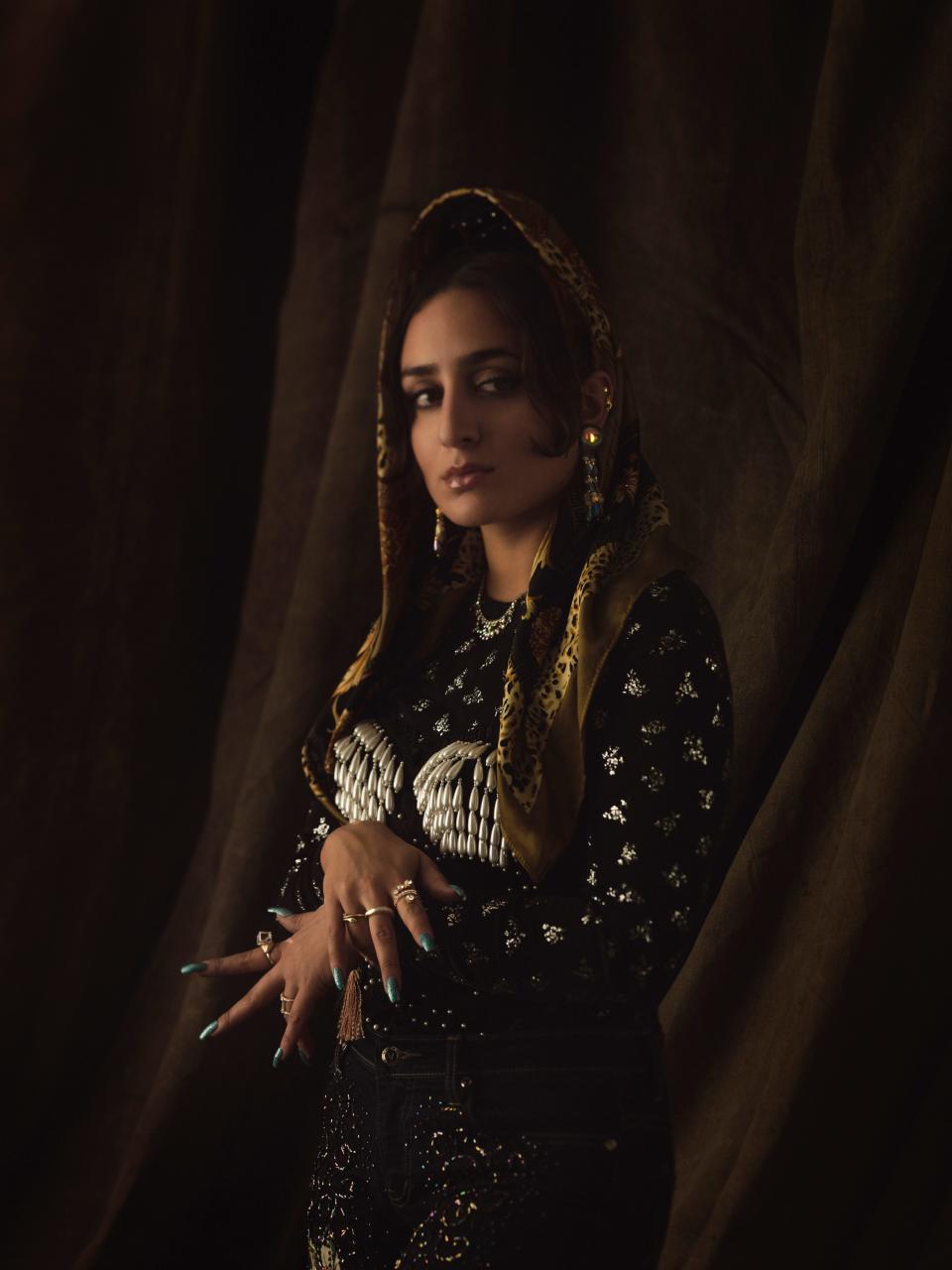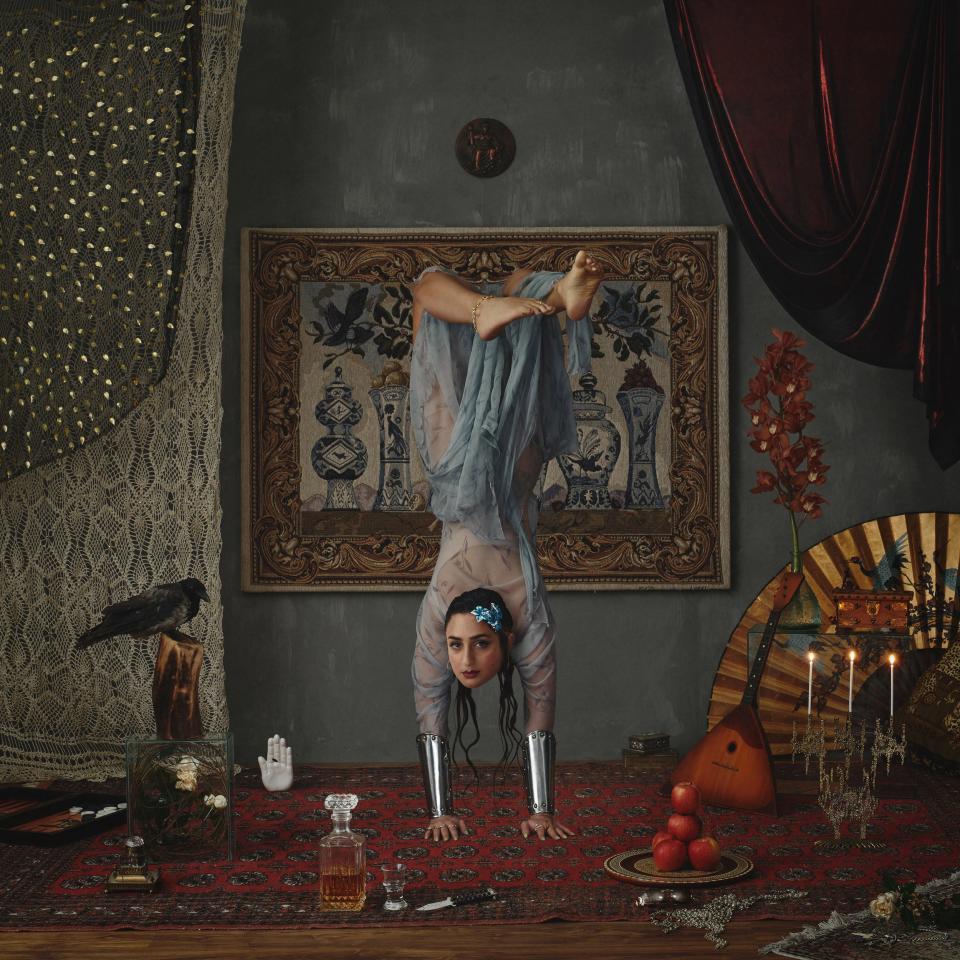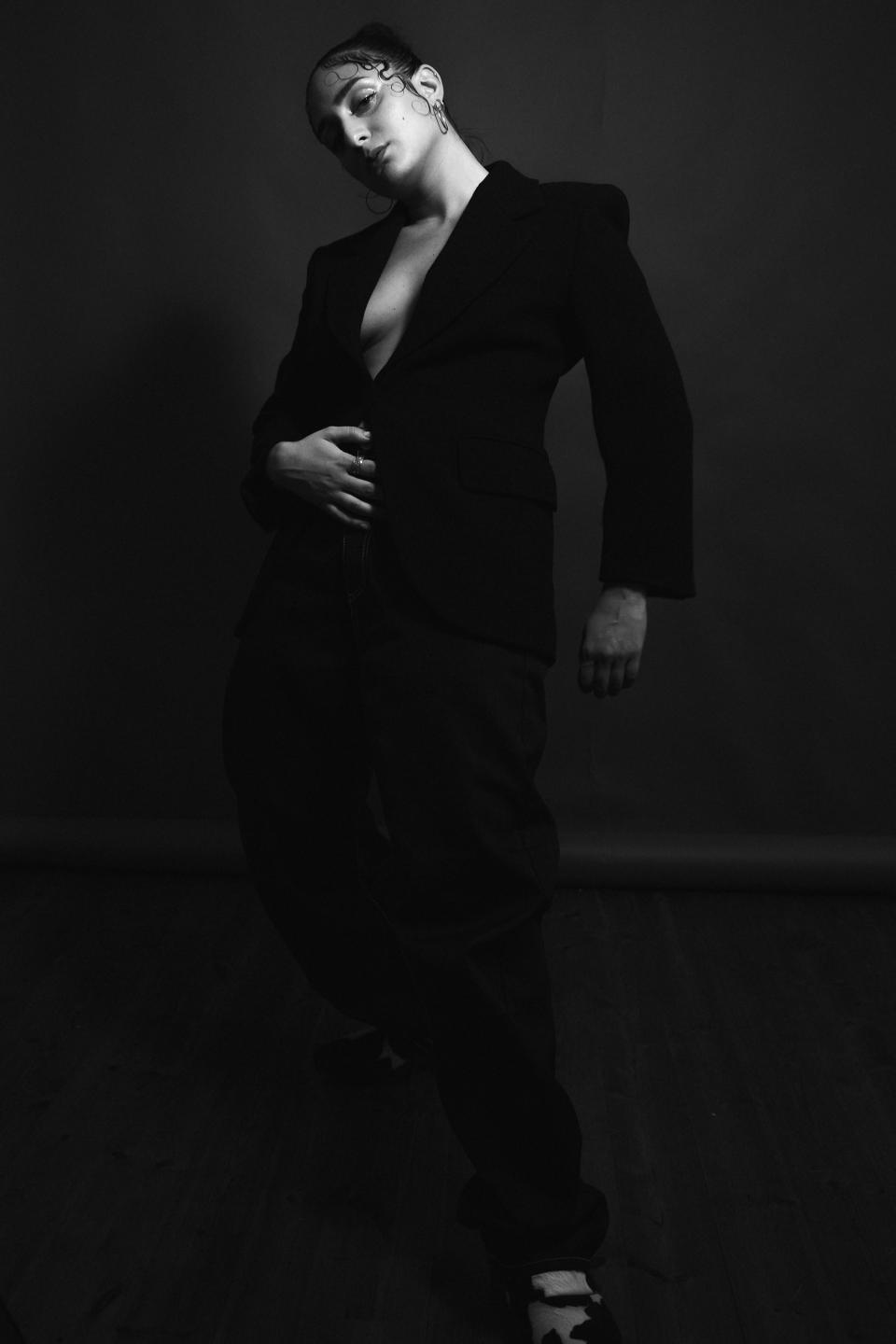This Artist’s Confrontational Style Draws On Both Her Persian Heritage and Her Local Swedish Punk Scene
When Iranian-Swedish artist Nadia Tehran stops by the Vogue offices at the very end of July, her hair falling long past her waist in two identical, carefully braided pigtails, she’s dressed in an asymmetrical faux-python top, a sleek pair of slacks, and some slight white and black steel-toed heels. It’s an outfit that’s relatively tame for Tehran—she can just as easily wear a silver metallic long-sleeved dress with a pair of bright tennis ball yellow sneakers as she can four drastically different prints fearlessly layered atop one another—but even so, its subtle drama speaks more of her Persian heritage than it does her small-town Scandinavian upbringing. “There’s definitely something there in the [Scandinavian] minimalism that’s very inspiring, but I think it’s been a struggle for me always feeling so extra as a person,” says Tehran. “Growing up in Persian culture, it’s really more is more.”
Earlier this spring, Tehran released her dark and expansive debut album, Dozakh: All Lovers Hell, a cumulative sonic document of the past 15 years of her life, dating all the way back from when she first got involved as a precocious kid in the punk and hardcore scene in her hometown of Jönköping, which is located about a four-hour drive south of Stockholm. This community was foundational to Tehran’s reactionary style, both in her clothing and music. She was just 12 when she sent a local band looking for a singer demos of the Yeah Yeah Yeahs, claiming that Karen O’s voice was her own (which actually isn’t too far off the mark if you listen to Dozakh in full). “I switch a lot between styles,” Tehran notes. She adds that New York brings out the latent Persian mom inside her, whereas during her return trips to Stockholm, she tends to favor all-black looks. “I can go from punk to glam in a second, but where I grew up, nobody wore anything else than what you could buy at H&M, so punk was the only alternative. I remember I was the first person in my school to wear black skinny jeans. Somehow, even though the punk scene was really, really white, for me, as the only immigrant kid in my school, that was the thing that I could relate to. Everyone was an outsider in that scene, so I sort of fit in anyway.”

Over time, Tehran has started to incorporate more Persian style signatures into her wardrobe—right now, in particular, she’s obsessed with reinterpreting ancient Persian textiles. “Ancient Persian clothing has a lot of sound to it—there are things hanging off it, so you can hear when someone’s coming or walking which I think is really interesting, and looking even further back there’s patterns and bright colors and so much gold and layering.” Tehran brings a similarly extravagant touch to her on-stage wardrobe. “I like to have layers that I can take off or put on, and sort of tell a story as a timeline on stage through my clothes. Theatrical, dramatic, and big silhouettes is what I look for,” Tehran says. She also frequently modifies these garments herself: “I’ll wear something backwards or upside down a lot for my shows, or I’ll deconstruct something. I don’t come from money so I’ve always had to be sort of creative in recreating something I would see in a magazine with the materials or the things I have around me—that’s how I still work.”
Tehran’s even translated this centuries-old extravagance into Dozakh’s surreal album cover, which is actually a composite of about ten different photos layered on top of each other. Tehran is captured mid-handstand in a gauzy, ice-blue gown and metallic cuffs, with her head boldly facing forward. She’s surrounded by a candelabra, ancient-looking tapestries (there’s one textile in there that her grandmother wove by hand), and a carefully stacked fruit plate, to name a few of the personal objects that Tehran hand-picked to appear beside her. “I was looking at all these paintings from this era in the 19th century in Persian history, called the Qajar Dynasty. The Shah of Iran was traveling a lot to France, and Western influences started to take root in a lot in Persian art. There’s lots of paintings of women entertaining in different ways: they’re dancing or standing on their hands, and they have long black hair, and a lot of them are naked and showing their breasts. Later, when the Islamic Revolution happened, most of the paintings were censored, so they drew over the paintings and put hijabs on the women, which completely ruined a whole century of art.”

Tehran might see this dramatic impulse as inextricably linked to her Persian heritage, but her work has long pushed boundaries almost to their breaking point (in the past, Tehran has controversially worn burkas onstage, long before M.I.A. wore one on the red carpet in 2010). “I think a lot of people don’t understand what I’m doing. In Persian contexts, it’s very rare for women to really stand out in a style that’s not beautiful, per se. I remember wearing black lipstick at this Persian New Year once and it was a huge thing. Everyone was speaking about my lipstick and my mom was almost crying, like, ‘Why do you have to do this?’ So yeah, I think my style has always been a bit confrontational.”
In terms of her music, too, Tehran continually pulls from her background and her family history. “Lyrically, I think Persian music has inspired my way of writing a lot.” She’s sampled her father’s voice in the album’s very first song, “Dozakh,” wherein he describes the harrowing moment during his service in the Iran-Iraq war when the car he was driving exploded by the front line. “He was between life and death. That moment changed everything—it defined his whole future and my whole future in Sweden. I don’t think I would be in Sweden unless that had happened. I think this first record is a documentation of my life up until this point. Now I’ve sort of told the story of my roots, and I’m looking forward for the next record to be the future—to be the tree that grows from those roots.”

Originally Appeared on Vogue

